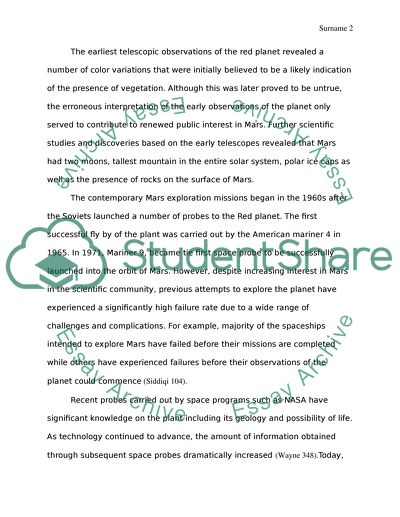Cite this document
(“Planet Mars NASA Mission Research Paper Example | Topics and Well Written Essays - 2000 words”, n.d.)
Retrieved from https://studentshare.org/physics/1495998-planet-mars-nasa-mission
Retrieved from https://studentshare.org/physics/1495998-planet-mars-nasa-mission
(Planet Mars NASA Mission Research Paper Example | Topics and Well Written Essays - 2000 Words)
https://studentshare.org/physics/1495998-planet-mars-nasa-mission.
https://studentshare.org/physics/1495998-planet-mars-nasa-mission.
“Planet Mars NASA Mission Research Paper Example | Topics and Well Written Essays - 2000 Words”, n.d. https://studentshare.org/physics/1495998-planet-mars-nasa-mission.


